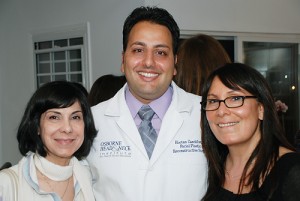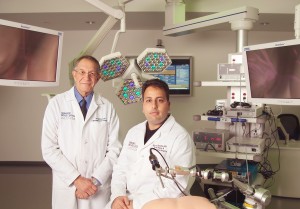- Hereditary Hemorrhagic Telangiectasia - May 25, 2016
- Hereditary Hemorrhagic Telangiectasia: Septal Perforation and Nose Bleeds - May 23, 2016
- Hereditary Hemorrhagic Telangiectasia: Epistaxis and Septal Perforation - May 18, 2016
- Wegener’s Granulomatosis: Autoimmune Disease and Multi-Focal Septal Perforation - May 9, 2016
- Kyle Korver: Facial Injury and Nasal Fracture - March 24, 2015
- Russell Westbrook: Facial Injury and Surgery - March 5, 2015
- Mega-perforation: Pushing the Limits of Septal Perforation Repair - November 26, 2014
- Septoplasty Complication and Septal Perforation - November 24, 2014
- Nose Picking (Rhinotillexis) and Septal Perforations: Why I should stop picking my nose…? - November 24, 2014
- Nasal Fractures, Septal Hematoma, and Septal Perforation: Simultaneous Rhinoplasty and Septal Perforation Repair - October 1, 2014
What is Frey’s Syndrome?
Question: I recently saw my doctor because I began to have episodes of facial sweating and flushing that would occur during eating or sometimes after I would wake up from a dream. These symptoms would only occur on the same side of my face as my recent parotid surgery. My doctor pointed out that I may have “Frey’s Syndrome”, and that it may be due to my recent surgery.
What is Frey’s Syndrome?
Discussion:
Frey’s Syndrome is a constellation of symptoms comprised of sweating and facial flushing during the following scenarios: eating a meal, thinking about eating, speaking about food, and dreaming about food.
Frey’s syndrome typically occurs when a nerve in the face (auriculotemporal nerve) is damaged during facial surgery, such as parotid surgery. This trauma to the nerve is most notably seen with traditional surgical techniques which require long incisions and heavy dissection into the underlying structures of the face. The auriculotemporal nerve normally sends signals to salivary glands, such as the parotid, to produce saliva when one is eating, thinking about eating, or even dreaming about eating. This phenomenon is known as gustatory salivation. When this nerve is damaged during surgery it attempts to reattach itself to its original salivary gland which is now absent. In place of the salivary gland the nerve mistakenly attaches to nearby sweat glands or superficial blood vessels of the face. The result of this mistaken union is sweating and flushing instead of salivation.
Although potentially embarrassing and inconvenient, Frey’s syndrome is otherwise harmless and treatable. Various topical medications are available with varying degrees of temporary relief. Permanent resolution of Frey’s syndrome is available through a reconstructive procedure of a usually unaddressed parotid defect. Reconstructive surgeons typically place a barrier, grafted from your own skin, in between the auriculotemporal nerve and the sweat glands of the face. This barrier effectively ends the mistaken communication between the nerve and the sweat glands as well as resolves the flushing symptoms.
Frey’s syndrome can be prevented by having reconstructive surgery after parotidectomy.
Drs. Ryan Osborne and Jason Hamilton of the Osborne Head and Neck Institute preform 3-4 parotid and reconstructive procedures per week and have pioneered techniques that prevent Frey’s Syndrome in their patients. They also have extensive experience with reconstruction of prior parotid surgery defects to cure Frey’s Syndrome. To learn more about Frey’s Syndrome and parotid surgery visit parotid.net.
Key Points:
- Frey’s Syndrome is due to damage of the auriculotemporal nerve and leads to sweating and flushing of the face associated with eating or thinking about food. This damage commonly happens during surgical procedures of the parotid gland.
- Permanent treatment is available in the form of reconstructive surgery.
- Frey’s syndrome can be prevented during parotid surgery by selecting a minimally invasive technique with reconstruction.



